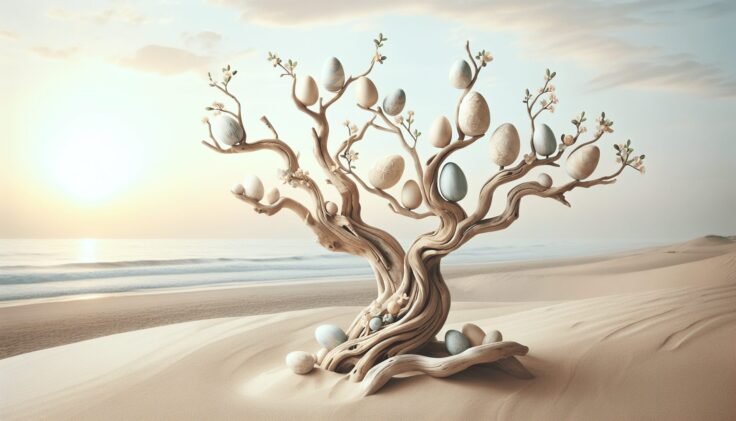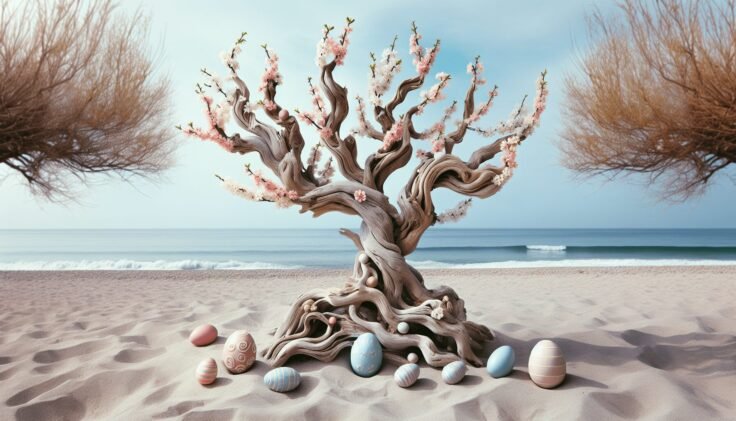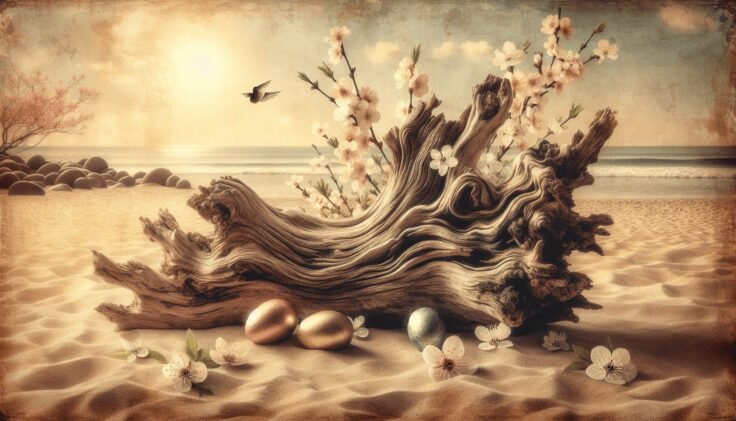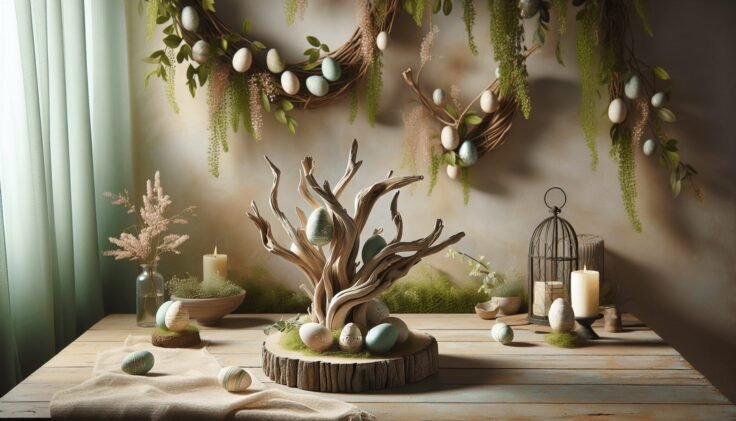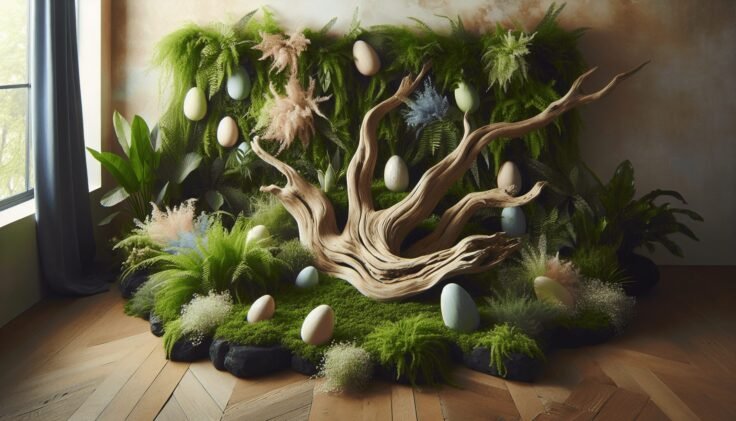Have you ever considered bringing the charm of nature into your Easter celebrations with a whimsical twist? The idea of a Driftwood Easter Bunny might just be the delightful addition you’ve been looking for! Combining the rustic beauty of driftwood with the playful spirit of Easter creates not only a unique decoration but also a conversation starter for your home or garden. In this guide, you’ll discover how to make your own driftwood Easter bunny while learning about the significance and charm behind such a creation.
Why Driftwood?
Driftwood is not just a piece of wood washed up on the shore. It holds a unique beauty forged by nature, time, and the elements. Each piece of driftwood tells a story of its journey through water and weather. This characteristic makes it an enchanting medium for art and decorative projects. Integrating driftwood into Easter decorations brings a natural, rustic feel to your festivities, blending the spirit of the season with nature’s charm.
The Unique Characteristics of Driftwood
Driftwood boasts a weathered appearance, often smooth and light in color due to its exposure to water and sun. Its natural shapes and curves add unpredictability and uniqueness to any art piece. These organic forms inspire creativity and lend themselves beautifully to crafting projects, especially when designing something as imaginative as a driftwood Easter bunny.
The Symbolism of the Easter Bunny
The Easter Bunny is more than just a delightful character in springtime folklore. It is a symbol of new beginnings, fertility, and the blossoming of life. Rabbits, known for their energetic reproducing habits, were once associated with Eostre, a pagan goddess of fertility whose animal symbol was a rabbit. Over time, this connection merged with Christian traditions, giving rise to the Easter Bunny we recognize today. Combining this symbol with driftwood elevates the message of renewal with nature’s own craftsmanship.
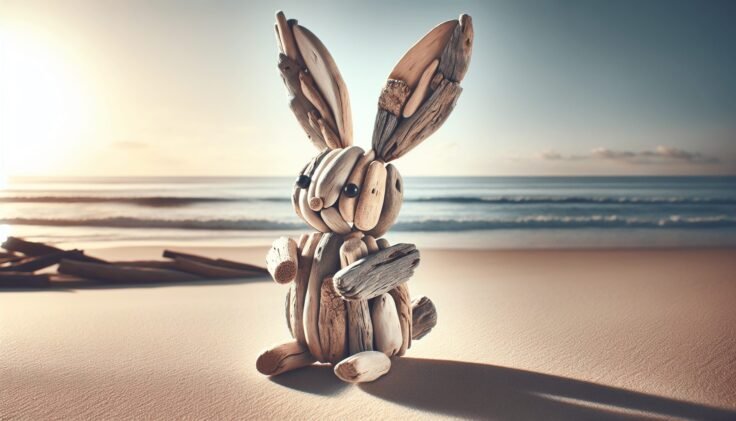
Gathering Your Materials
Creating a driftwood Easter bunny requires some basic materials and tools. This process allows you to connect with nature and express your creativity.
Essential Materials
Here is a list of essential materials you’ll need:
| Material | Purpose |
|---|---|
| Driftwood Pieces | For the structure of the bunny |
| Hot Glue Gun | To attach driftwood pieces together |
| Wire (optional) | For added reinforcement or flexibility |
| Sandpaper | To smooth and prepare the driftwood |
| Protective Finish | To enhance and protect your creation |
Collecting Driftwood
Before you can begin crafting, you’ll need to find the perfect pieces of driftwood. Explore nearby beaches, rivers, or lakes where driftwood naturally accumulates. Look for a variety of sizes and shapes to give your creation dimension. Be sure to check local regulations regarding collecting driftwood to ensure you’re abiding by the rules.
Crafting Your Driftwood Easter Bunny
Now comes the fun part – crafting your driftwood Easter bunny! This section will guide you through the process with tips and tricks to make your project a success.
Choosing the Right Driftwood Pieces
When selecting your driftwood, consider the shape and size of each piece. Long, narrow pieces are perfect for the ears, while more rounded pieces can serve as the body or head. Take your time arranging potential pieces into a bunny shape before affixing them together. This step helps you visualize the final piece and make any adjustments as needed.
Assembling the Bunny
Start with the body as the foundation of your structure. Use your hot glue gun to secure larger pieces together, building up a stable base. Continue adding pieces for the head and legs, constantly reassessing the balance and stability. If certain pieces don’t fit snugly, gently sand them down or use small pieces to fill gaps.
Adding the Ears and Tail
The ears are one of the defining features of any bunny. Choose two slender, upright pieces of driftwood to create an attentive and playful expression. Secure them firmly to the head. For the tail, consider using a small, rounded piece or even a tuft of organic material like moss or twine to mimic the fluffiness of a rabbit’s tail.
Final Touches
After the main structure is complete, observe your driftwood bunny for areas needing refinement. This might include additional pieces for balance, aesthetic detail, or further reinforcing joints for sturdiness. Treat the finished piece with a protective finish to highlight the driftwood’s natural beauty and ensure durability against elements if displayed outdoors.
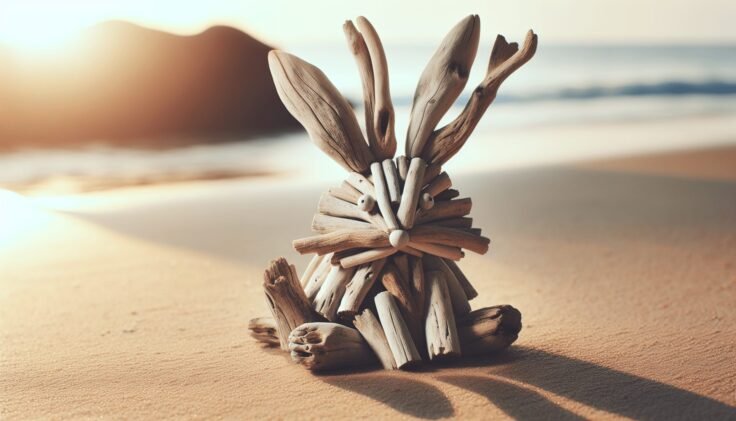
Personalized Decorative Ideas
Apart from the basic structure, you can personalize your driftwood Easter bunny to make it uniquely yours. Here’s how:
Painting and Decorating
While the natural appeal of driftwood is tempting to leave unaltered, adding subtle touches, such as painted eyes or a small bow, can bring your bunny to life. Consider using earthy tones that complement the driftwood’s hues, or pastels to reflect the Easter theme.
Functional Twist
Why not incorporate functionality into your design? Your driftwood bunny can serve as a basket holder, a planter, or even part of a larger Easter centerpiece. For instance, position your bunny holding a small planter with spring flowers or a nest filled with painted eggs.
Maintaining Your Driftwood Bunny
Proper care will ensure your driftwood bunny remains charming for many Easters to come.
Indoor vs. Outdoor Placement
Decide whether your bunny will be an indoor or outdoor decor piece. Indoor placement offers protection from weathering, while outdoor placement requires extra consideration for longevity. Position your bunny in a sheltered area, away from prolonged moisture exposure like rain or intense sun, to prevent quick deterioration.
Routine Care and Maintenance
Dust your driftwood bunny regularly and inspect for any loose pieces. If displaying outdoors, periodically reapply a suitable outdoor finish to protect it from the elements. This simple maintenance routine will keep your creation looking fresh and captivating.
Understanding the Sustainability Factor
Creating a driftwood Easter bunny not only serves as a delightful crafting project but also opens a dialogue about sustainability.
Eco-Friendly Crafting
Driftwood is a naturally occurring resource, making it an eco-friendly option for crafting enthusiasts. Using driftwood in art repurposes materials washed ashore, which might otherwise be considered waste. This practice not only mitigates environmental impact but also sparks creativity in using natural elements.
Community Connections
Collecting driftwood and engaging with the community about its use promotes awareness of local ecosystems and conservation efforts. Sharing creative projects like a driftwood Easter bunny can inspire others to consider sustainable materials and methods in their decorating and crafting endeavors.
Inspiring Future Projects
The skills and creativity gained from crafting a driftwood Easter bunny can lead to other exciting projects. Consider incorporating driftwood into more seasonal decorations or home decor items. Here’s a small table of inspiration for future driftwood ventures:
| Project Idea | Description |
|---|---|
| Driftwood Wall Art | Arrange driftwood on a canvas for a rustic piece |
| Seasonal Wreaths | Use as a base for a natural, rustic wreath |
| Garden Sculptures | Create abstract forms to enhance outdoor spaces |
| Planters & Holders | Transform into unique holders for plants or items |
Embracing Nature in Art
Engaging with driftwood for your Easter bunny is more than a craft—it’s the embracing of nature’s artistry. Through each distinctive piece and unexpected twist, driftwood invites you to appreciate the beauty of imperfection and the stories carried by each fragment.
A Timeless Decoration
Your driftwood Easter bunny doesn’t just serve as a festive decoration; it captures the essence of time and nature. This timeless piece will not only enhance your decor each Easter but also serve as a symbol of creativity and respect for the environment.
Celebrate your finished bunny as a testimony to your crafting skills, creativity, and an embodiment of the charm found in nature. Who knew a piece of driftwood could harbor such life and imagination?
Reflecting on the journey from shoreline to its place in your home, you are reminded of the interconnectedness of art, nature, and celebration, finding joy in simplicity and the beauty of discovery.
